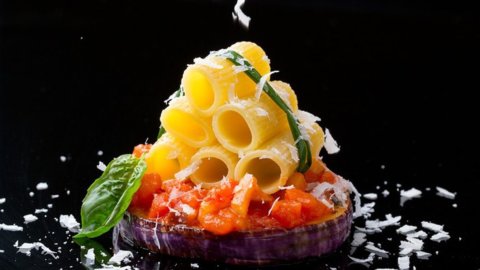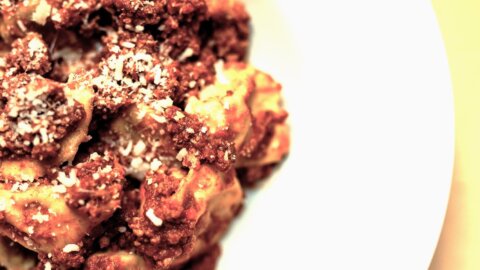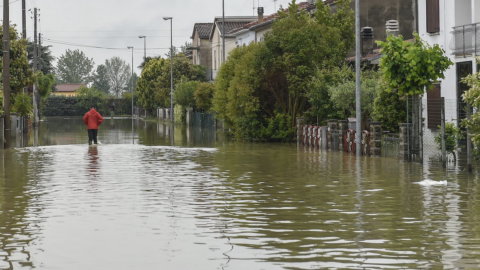How do you prepare a successful menu? Sounds easy but it's not at all. This is why we asked the Chef of the Italian Palate Philip Sinisgalli to give us some suggestions for the construction of a complete menu, or at least some indications to avoid making gross mistakes. Above all, he reminded us that the courses must create a coherent whole and stimulated us to consider the creation of a menu as a moment of great creativity: we want to imagine what doesn't exist yet. The first important help - he continued - comes precisely from the shopping, that's where the inputs arrive, perhaps strolling through the stalls of a market.
The voice of seasonality speaks to us: perfumes, textures and colors will define some basic characteristics. Logic cannot be missing in second place: it is crucial to reason on the scale of taste. Our palate is something very delicate and that must be treated with grace, so it is good to start from simple, almost elementary, immediately recognizable flavours. Before describing the courses we are all familiar with, he asked us to be able to open a parenthesis on an element he loves to create because, contrary to its small size, it must be a casket full of numerous attentions: the amuse-bouche that precedes the appetizer.
It is preferably made up of a single bite which concentrates a crunchy aspect and a soft element, it should be warm and, if desired, have a sour note but above all – the amuse-bouche – must be synonymous with delicacy. Starting with a bite that is too savory or spicy would compromise the possibility of savoring the crescendo of tastes to come. Side note but not too much: you also eat with your eyes. The climax for the palate must go hand in hand with the chromatic one. Great to create color contrasts in each dish making sure that the most important course attracts the most admired looks also for the colors it expresses. Once you have tasted the amuse-bouche, you measure yourself against the appetizer which must make you understand how the whole will be characterized.
The appetizer and the main course (especially if there is no first course) must have an important connection therefore, if the choice is oriented towards a fatty fish for the continuation, it is excellent to play on acidic notes for the appetizer which, by keeping the palate clean and stimulating salivation, prepares it for the next course. The note of common sense then is not to repeat the same taste more than twice. Those who prefer to also offer the first course, remember the crescendo of flavor so it is better not to exceed with the doses and above all to find the balance between the amount of pasta, for example, and the sauce chosen.
The stuffed pasta deserves a separate discussion but, limiting himself to a couple of notes, Chef Filippo advised, if you choose ravioli, not to go beyond the first course. If, on the other hand, you intend to get to the second course while choosing filled pasta, he revealed a little trick to lighten up: with a second course of fish, better if the ravioli have a vegetable filling, allowing the note of the sea to enter only the sauce. This ploy allows you to preserve the harmony, grow with the taste without weighing it down and leaving a wider opening on the flavor of the second course.
We come then to the seconds. If it is fish, it is always better to combine it with a good sauce because the initial flavor is still delicate. The seasoning of the first course will have created an important and tasty whole which, without the addition of sauce, now runs the risk of making us fall from the famous scale of taste. He advised against flat fish (sole, turbot, etc.) as too delicate, or suggest them, yes, but when you choose not to have the first course. Conversely, a tuna or salmon play their part worthily in a complete menu.
On meat (especially red), it goes without saying, there is the opposite problem: a to worry is the excess of taste and chewiness, therefore the presence of the side dish is always advisable, however not essential in the case of fish. With a bit of regret, the Chef skipped over the pre-dessert, another lesser-known element which he finds very interesting, to tell us directly about the dessert. One word: spectacular, this is how desserts should be, an explosion of colours, aromas and flavours. Also in this case, by now we know, pay attention to the balance: avoiding a chocolate dessert after a meat-based menu would be like adding weight to weight, vice versa, this option is excellent in the case of a fish-based menu. In conclusion, here is his most important advice: experiment! Without attempts - even wrong ones - the risk is that the dishes take on that aftertaste without personality of "I would like but I can't".





